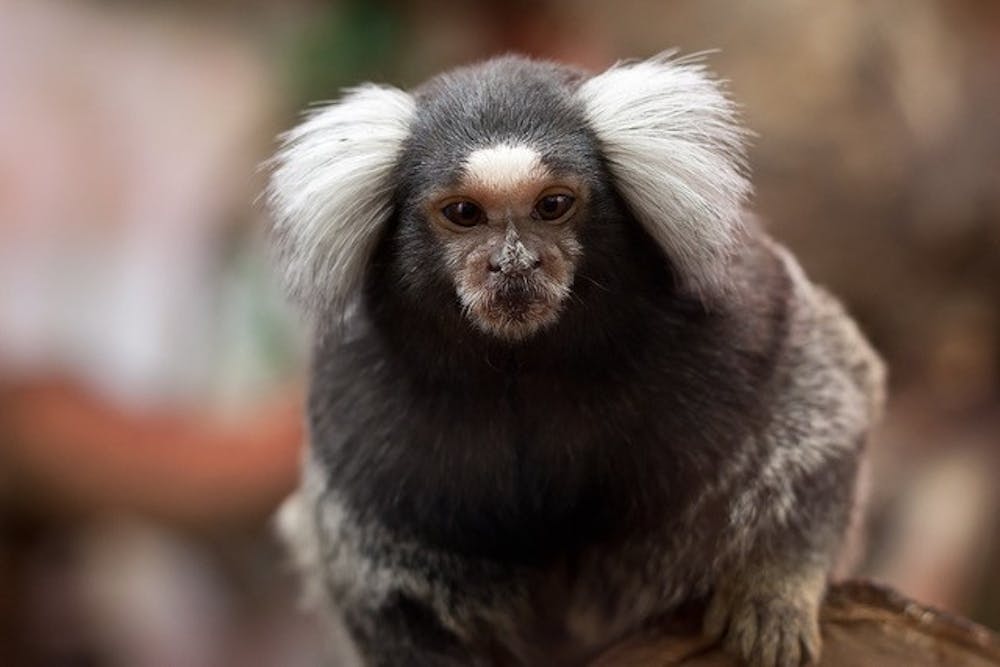A recently published study led by neuroscience and psychology professor Asif Ghazanfar suggests that monkeys, like humans, may have self-selected for cooperative social behaviors. This study, published on Oct. 15, is the first to provide direct evidence for this theory known as “self-domestication” by supporting a causal link between phenotypes associated with domestication and friendly vocal exchanges in marmosets.
Scientists have speculated that self-domestication is likely associated with affiliative patterns because, as Ghazanfar explains, “in the case of [highly cooperative mammals], particularly humans, to live in such close quarters and high density, we would have had to self-select for us to be less aggressive.”
Ghazanfar’s own interest in domestication began in the early 2000s at Harvard with Brian Hare’s research on dog domestication and grew after anthropology professor Richard Wrangham and Hare’s 2011 paper on domestication in great apes.
“In domesticated mammals, when you try to select for nonaggression, for some reason, you get all these other common traits among domesticated species,” Ghazanfar noted from the papers. “Often, you can lose seasonality in breeding, decrease sexual dimorphism, and get a white patch on the forehead.”
Marmosets were ideal for this study as they “have all of [the aforementioned] features” in addition to being highly prosocial primates, according to Ghazanfar.
This study was co-authored with Daniel Takahashi, a former postdoctoral researcher who is now a professor of neuroscience at Federal University of Rio Grande do Norte, Brazil; Rebecca Terrett ’16; Lauren Kelly, Ghazanfar’s former lab manager who now works at Rutgers Robert Wood Johnson Medical School; and two collaborators from New York University, James Higham and Sandra Winters.
Over the course of five months in 2017, Ghazanfar and his collaborators tracked the development of white patches in three twin sets of infant marmosets. During the first two months, one twin received a high rate of contingent feedback from a computer programmed with adult noises. The other heard responses to only 10 percent of their calls. Photos taken in the following three months showed that the twin who received more vocal feedback showed greater white pigmentation than its counterpart.
These sessions lasted 40 minutes, every other day. During these days, the monkeys were with family for the other 23 hours.

According to Ghazanfar, “no one had ever tested this kind of thing, something critics of self-domestication had pointed out.”
“If you’re saying that affiliated behavior is selected for, but you get all these other traits for free, then the degree of affiliated behavior in an individual should be related to the degree of this other phenotype being expressed,” he said.
Ghazanfar noted that his study was not only inspired by this observation, but also by a 2014 paper worked on by Wrangham. The paper hypothesized that there was a special type of stem cell, known as neural crest cells, that contributed to multiple structures — including pigmentation — affected by selection for reduced aggression, a hypothesis Ghazanfar found to be “incredibly elegant.”
Interested by this potential link, Ghazanfar and Terrett, who was being advised by Ghazanfar on her senior thesis at the time, completed a similar study four years prior to the publication of this one and reached a similar conclusion.

“[The conclusion] was amazing,” Ghazanfar stated. “I almost couldn’t believe it. But with so few animals, it just wasn't enough to put together a paper.”
A year later, Ghazanfar’s lab returned to this question with a study that aimed to describe facial coloration in primates. Unbeknownst to Ghazanfar at the time, the marmoset twins involved were also participating in a vocal learning study.
The latter study, published in 2017, found that if infants received a lot of feedback from parents, they developed their vocalizations faster. If they didn’t get feedback, their vocalizations developed much slower.
Ghazanfar goes on to describe the moment he and his collaborators realized the implications of putting both studies together.
“All of a sudden, we find that the rate of white patch development is totally related to how much parental feedback they got,” Ghazanfar said. “What that’s telling us is that this affiliated behavior, where we saw a correlation with the size of their white patch, is also developmentally linked. And that was, I mean, it was just totally incredible.”
In the final step prior to publication, Ghanzafar’s lab confirmed that these light fur patches lack melanin, consistent with the impact of neural crest cells on melanin. Ghazanfar characterized his findings “not as overwhelming support for, but are entirely consistent with the neural crest cell hypothesis and its relation to self-domestication.”
Down the line, Ghazanfar “definitely wants someone to replicate” his study. Afterwards, he hopes that domestication trait associations can now be observed in individual animals, instead of using generalized characteristics of an entire species to conclude that a species self-domesticated.
Ghazanfar also stated that he hopes his findings can help researchers comprehend what makes humans so cooperative, as well as investigate neurocristopathies — human diseases related to neural crest cells.
Since the conclusion of this study three years ago, his lab has moved on to other research. Still, when asked to reflect on the study, Ghazanfar said that “it was one of the highlights of [his] career.”
“This is a kind of once-in-a-lifetime study. You don’t plan for it, it just happens.”








